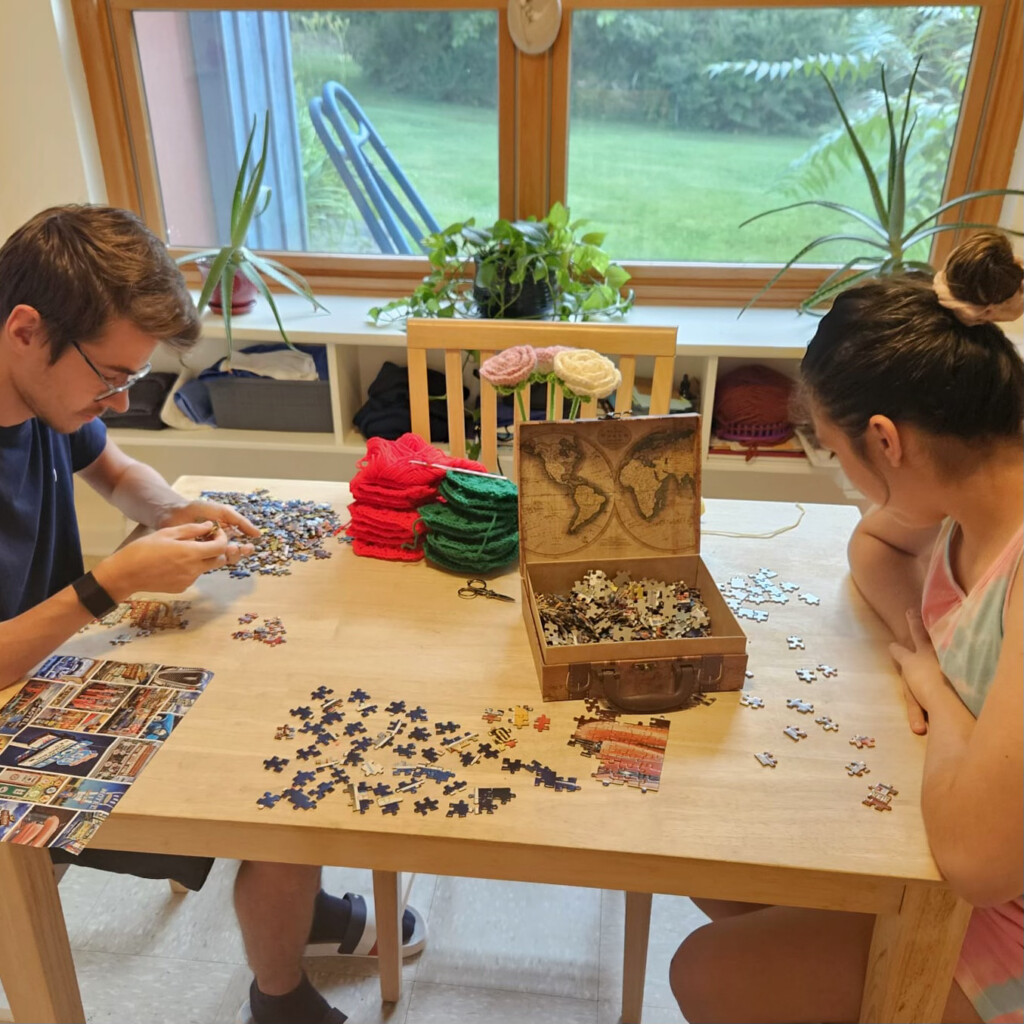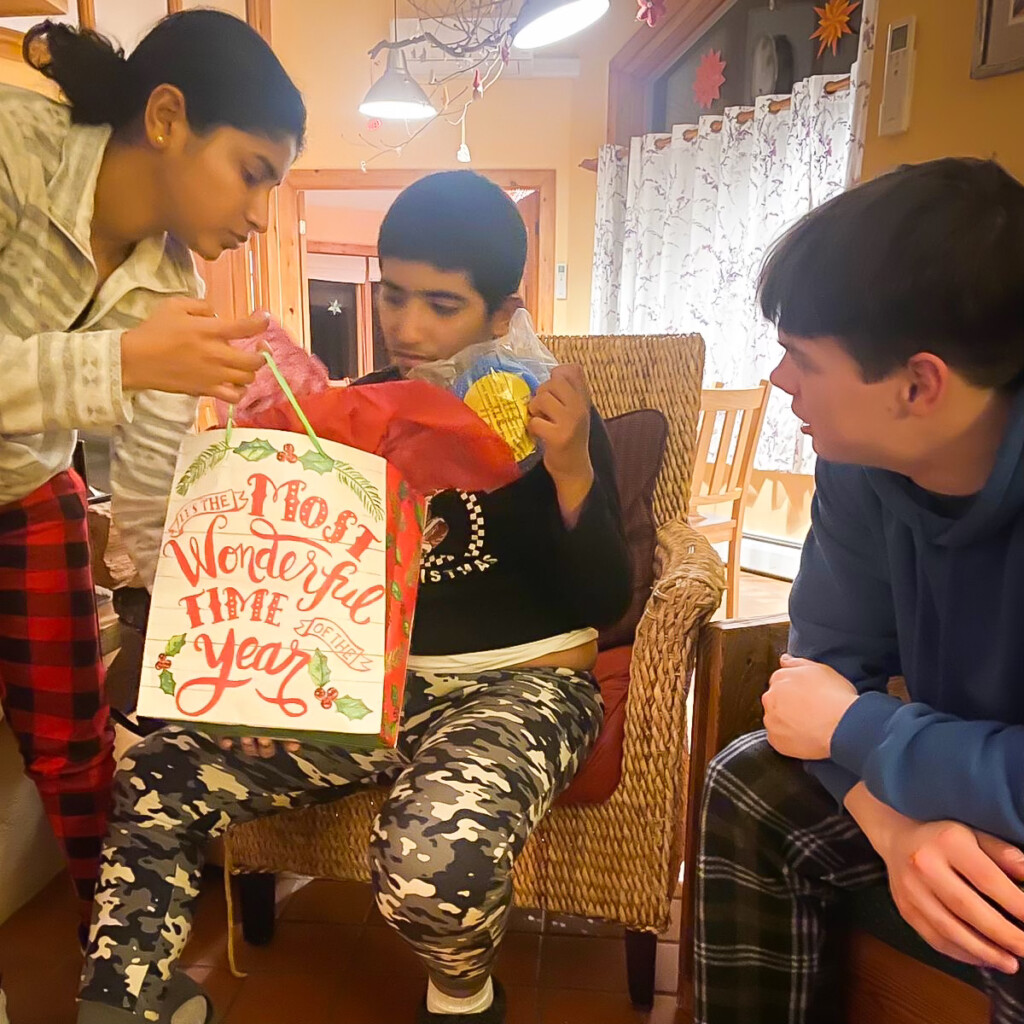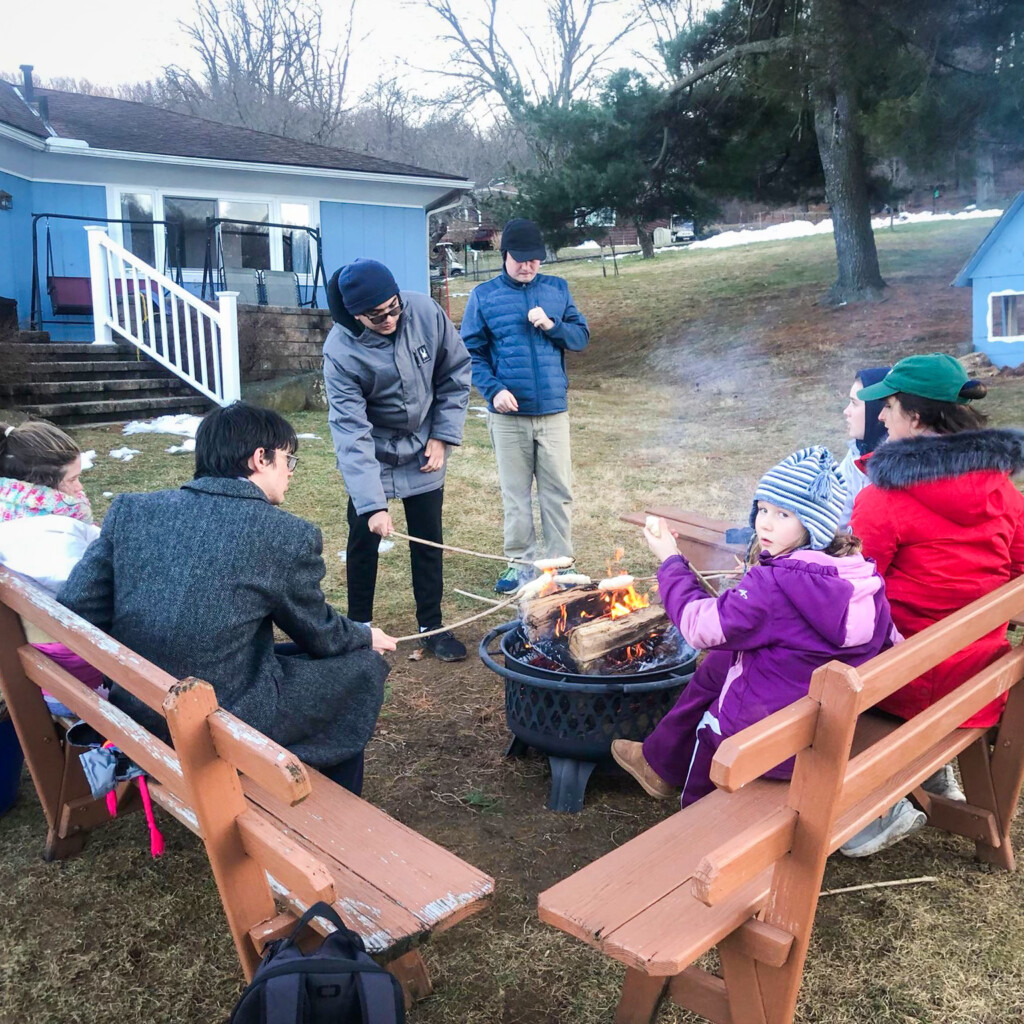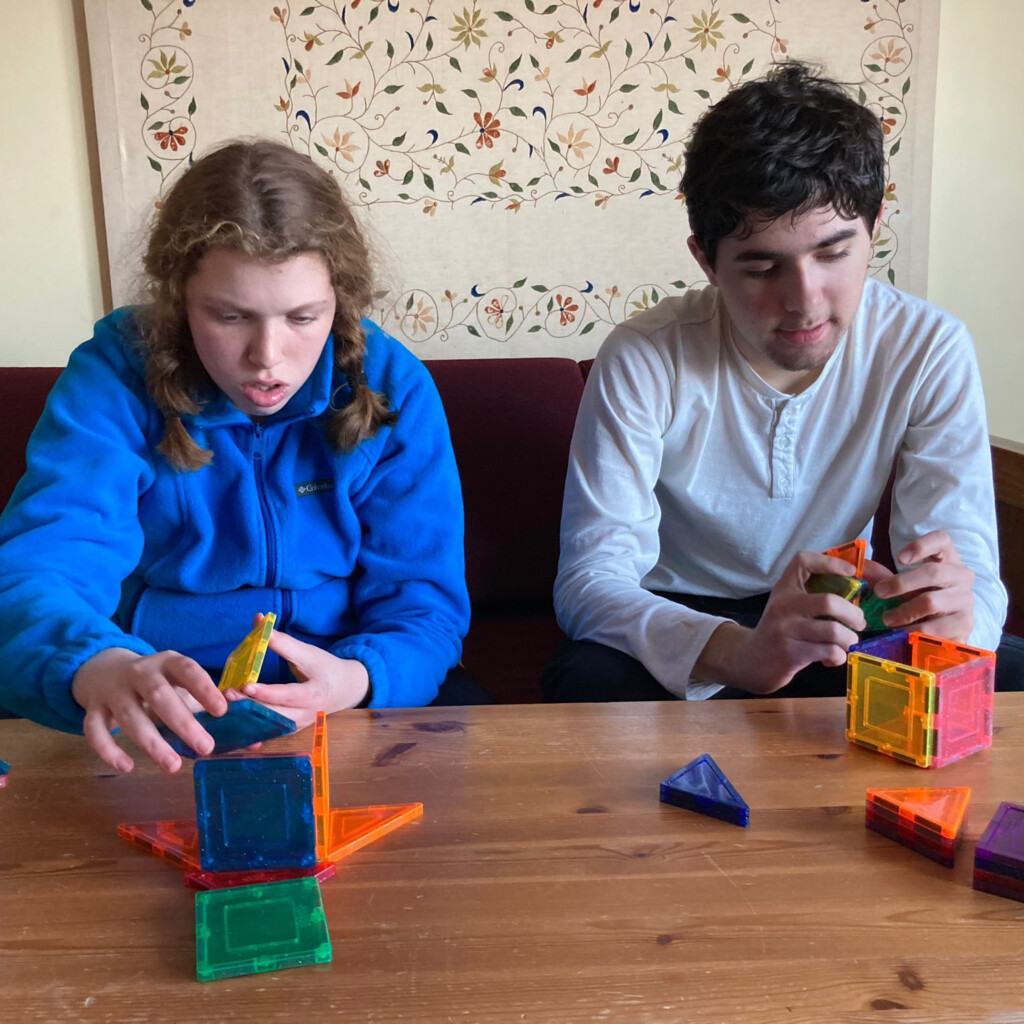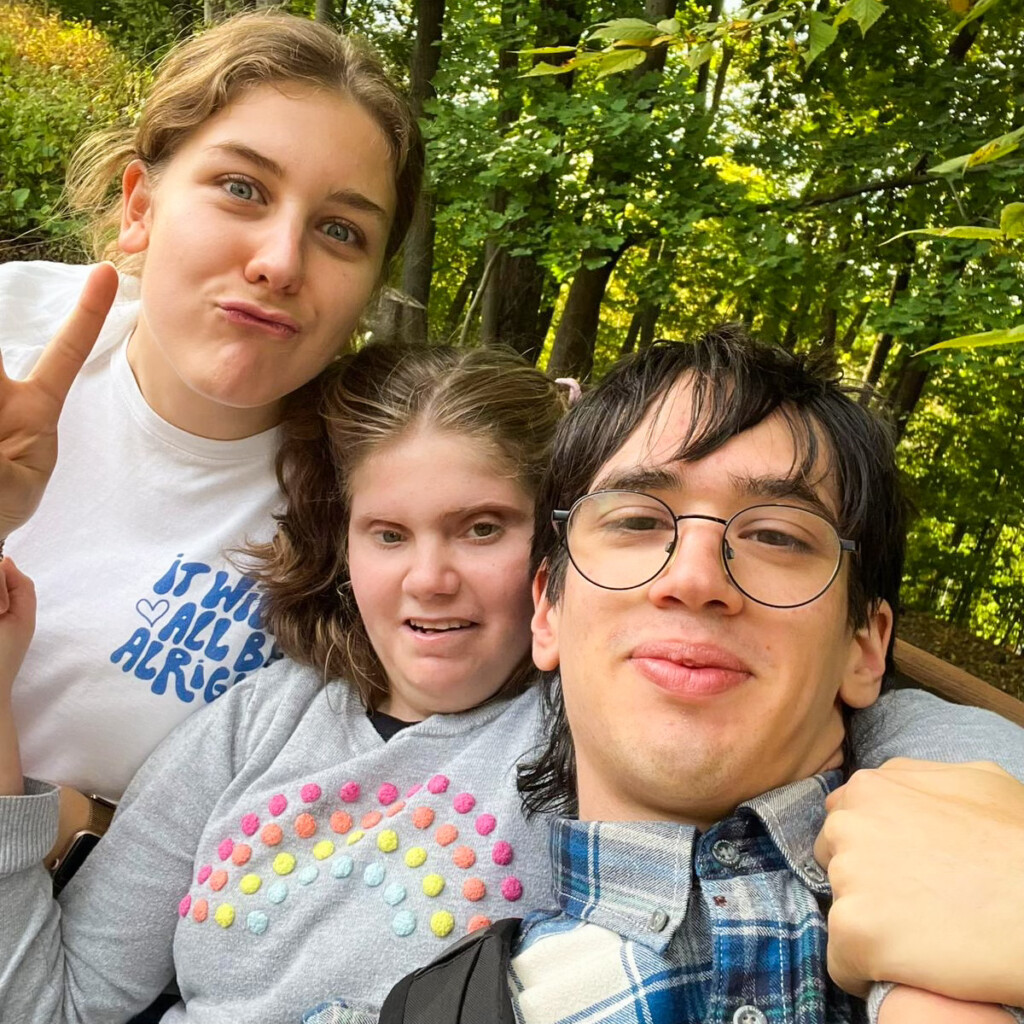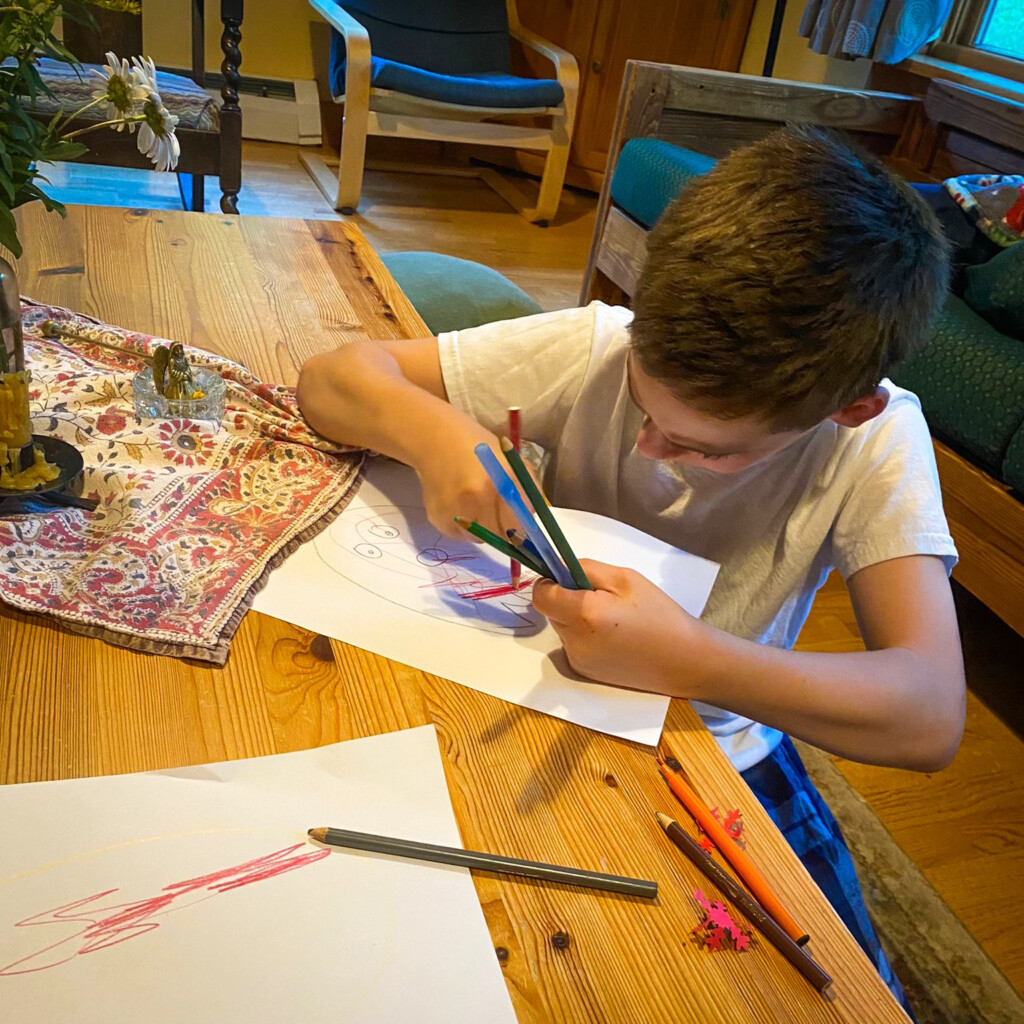Intention and meaning
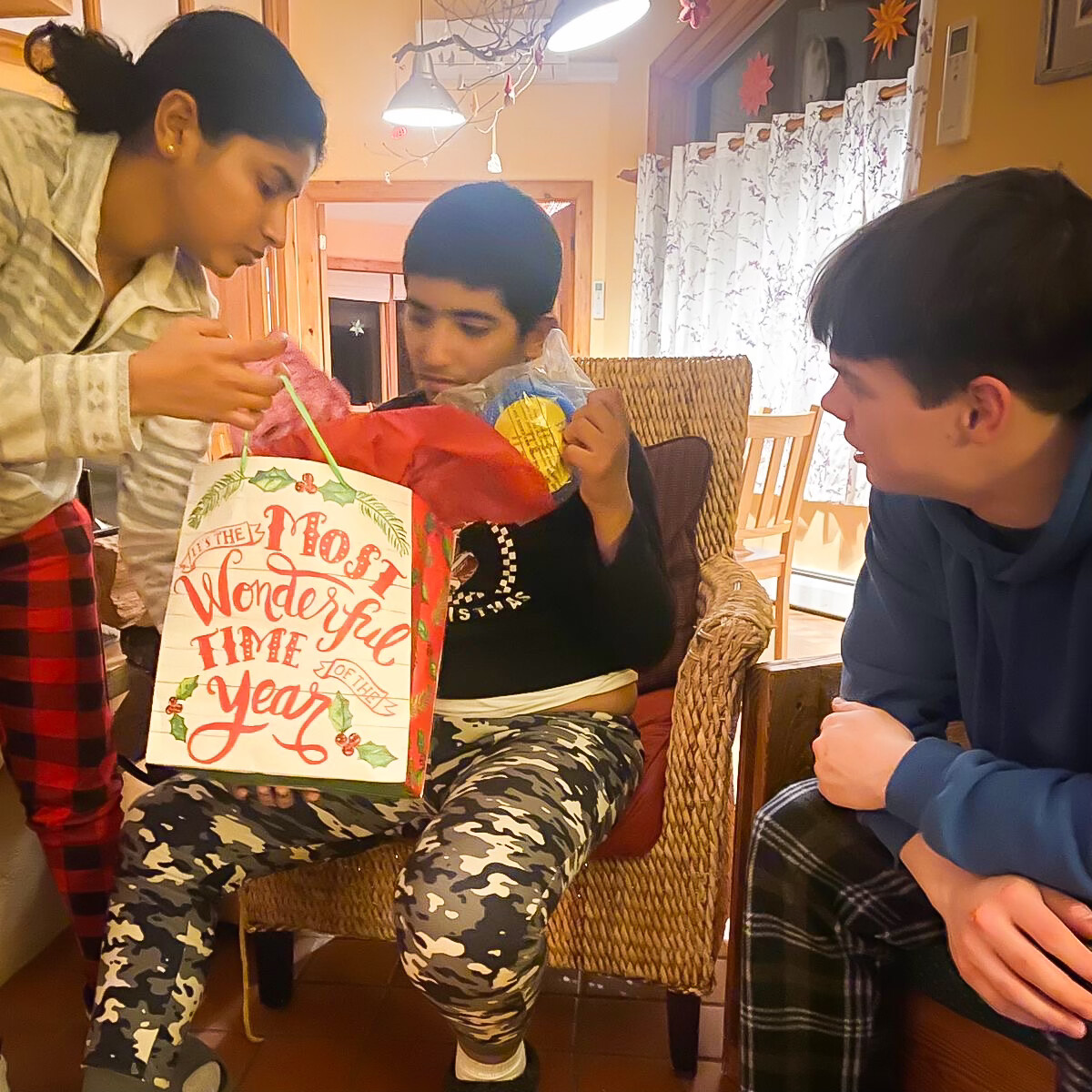
Driving down Children’s Village Lane, you enter a village with many homes, with many people. Our children are not at home within themselves, but here they find an outer home as they live with others and others live with them. Through this life sharing arrangement, it is our hope that the students will become not only part of the house community in which they live, but become more a part themselves.
Our houses are homes. Not only a home for the coworker families that live there, but for all of us – the family, young coworkers, and the students. The architecture is open and bright. There is so much light, so much nature, so much color.
In Camphill communities, people want to know each other. Socialization is not forced or arranged; it is organic. We have potlucks, meetings, concerts, festivals, and neighborhoods where we can pop next door to ask a question or have a cup of tea. People want to know one another, whether we are coworkers, students, or staff.
When a student moves into your house, you receive their file and all the information about the student. While this information is helpful, as a homemaker, my first question about each child is, “Who are you in your core being?” This is quickly followed by, “Are you getting enough sleep? Are you eating the right things? Do people communicate with you? Do people see you and want to know who you are? Who are you and what is it you need?” Our students need order in their outer environment filled with love, devotion, and care. We do not see the child as their symptoms, but as who they are and what they need.
We offer rhythm, the right food, play, self-help, and practical skills. The students get security through rhythm. They can relax into the day because they know what is coming. We give full explanations including expectations for the children. The way you say things is as important as what you say, if not more so. Speech is purposeful and calm, soothing.
Home life is about doing the same even though our needs are different. We all take our shoes off, we all set the table, and we all help with laundry. Every child learns through imitation. We set an example. Everything is done with intention and meaning, a constant giving and taking. This is where their IEP goals come in. We work little by little in the house to accomplish self-care and home care skills that get students closer to their goals.
We learn through polarities. Sitting still is a wonderful example. We do not just tell a child to sit still and make them do it; you teach them to move. You take them on a brisk walk through the woods. You stop. You rest. You point out a butterfly fluttering nearby. Together, you watch it glide out of sight as you both are still and quiet. Just that brief moment is a huge moment of learning. Those and others like it build and eventually, sitting still happens naturally.
